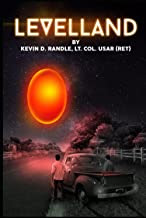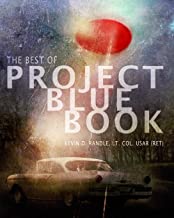The entry tells us that the event happened near the Ohio-Michigan border and I listed is as "Insufficient Data," meaning that I didn’t have anything more than the information published. There are those that question this.
I wrote, "Bette Shilling reported to Len Stringfield that a friend, an Air Force officer, had told her that he’d seen a coded message telling of a flying saucer crash. According to that information, two of the aliens were dead and a third was still alive. The message was directed from a communications station in Detroit and sent to the commanding officer of a base somewhere in Ohio."
That seems fairly straight forward. The information came, indirectly from Bette Shilling, and it went to Len Stringfield. The footnote told me that it was from his 1991 Crash/Retrieval publication, but that wasn’t helpful, and, as it turned out, not completely accurate. But more on that later.
I found, from Stig Agermose, the following:
Here is another thought-provoking account that ought to be checked for sure. The alleged crash took place in 1974 and was announced two times by a tv station in Detroit, once in prime time news: a UFO with four aliens aboard had been intercepted by the United States Air Force and had crashed in the area. My check with Kevin Randle's "A History Of UFO Crashes" established that the incident might be confirmed by an entry in Len Stringfield's "Crash/Retrievals", but I haven't been able to compare with the latter. More on that presently.
In her book about the life with her ex-husband (Backstage Passes, Life On the Wild Side with David Bowie, Orion Books, London, 1993, p. 203ff.) Angela Bowie says that it was nice to leave the hectic life of New York once in a while, whether it was for a concert tour or a mystery one. This quote concerns a tour in 1974:The open road, for instance, was most refreshing. Yes...the limo purring along at a steady twenty-five, good old Brooklyn Tony Macia's bodyguarding bulk behind the wheel, Detroit back down the interstate unraveling behind us, Minneapolis-St Paul up ahead somewhere, the moonroof open, the powerful telescope surveying the summer night sky from its tripod mount, the aliens up there perhaps recognizing that we meant them no harm, that we were the ones who could be trusted...
They had been having a bad time, after all. One of their craft had been intercepted somewhere north of Detroit, engaged by the United States Air Force and - well, we never found out what happened after that. We didn’t know if the saucer had been forced to crash-land on earth, or blasted out of the sky so that it fell to earth, or what. We didn’t know if its occupants - its crew? - were dead or alive or somewhere in between, although we did know that there were four of them.
We knew all this because while we were in our hotel room in Detroit, we saw an afternoon TV news flash to the effect that a UFO had crashed in the area with four aliens aboard...more news at six.
We tuned in again at six - of course we did, along with everybody in the state - and learned more, but not much more. The news crew confirmed the landing, yet avoided being specific about its location and presented what little information they had with great caution, as if doing their best to downplay the sensational and possibly panic-causing information they were supplying, straight-faced and soberly, to their public. These were the station's regular newscasters, reputable and popular, with everything to lose by creating a hoax and nothing but brief notoriety to gain.
That, however, is what we were told when the eleven-o'clock news came around: The prime-time news crew had perpetrated an irresponsible and inexcusable hoax, and had therefore been dismissed from their jobs. No UFOs had landed; no aliens were in custody, dead or alive; the United States Air Force had positively not engaged or intercepted any craft whatsoever in the skies above Michigan; and that, officially and absolutely, was that.
It was difficult to know what to make of this incident. At one extreme, it could have been just an overblown cosmic-hippie-cocaine dream, an instance of too much weirdness for too long crashing through into the perceived reality continuum. On the other hand, we had the videotape.
Yes, even in 1974. It so happened that the documentary filmmaker Alan Yentob was along with us on the trip, making the film that would become "Cracked Actor", and he had his VCR hooked up to the television set in our hotel room when the afternoon news flash first caught our attention. So we'd taped the whole six-o'clock and eleven-o'clock news shows. There was no denying that the broadcasts had happened.
The broadcasts at least. In David's opinion, and mine too, what had just occurred was indeed a warp in the usual business of business-as-usual.
David believed very strongly that aliens were active above our planet, and so did (do) I. That's why we were so alert in the limo on the way to Minneapolis, watching intently for signs of further UFO activity in the bright night sky. It was mostly David who had his eye pressed to the telescope (purchased by Corinne Schwab, his personal assistant, during a lightning shopping spree in Detroit). He'd talked about the six-o'clock newscast during his show at Cobo Arena in Detroit, and he believed that the energy thus created might well have communicated itself to the beings monitoring from above our human reaction to their fallen (slain/captured/atomized?) fellows.
I don't know quite what David expected, because by now he'd moved beyond his manic-monologue mode into his silent, non-communication state, but I suspect he wouldn’t have been surprised at all if the aliens had come right down to the limo and tractor-beamed him up for an exchange of ideas. He was feeling pretty much like the center of things here on earth at the time, after all, and it probably seemed obvious to him that some right-thinking human should take on the job of Man's ambassador...
No aliens heeded the call, though, and after a while he disappeared into his coke, sheltered by Corinne, and I lost interest. I left the tour, and them, the next day.
Evaluating the story I must admit the logic of Angela's views. It seems unlikely that a well-respected and popular newsstaff should risk its standing as well as its existence for the short mention, which reports like that might give.
Add to this that her account might be confirmed by Len Stringfield's "Crash/ Retrievals."
Agermose then quotes the entire entry from my book, as I did above, adding the name of my book and the page on which it is found... 206 if you must know. He then wrote, "Unfortunately Randle doesn't say where he got the date from. Maybe Betty Shilling dated her experience to the spring of 1975, giving Randle a reason for referring the crash to this time frame. Stringfield himself might offer another and better basis for doing so, but as I don't have a copy of his book, I would very much appreciate if somebody could tell me how close Randle's rendering of the particulars is to Stringfield's own.
Well, I certainly can. In Stringfield's The UFO Crash/Retrieval Syndrome, Status Report II: New Sources, New Data and published in January 1980 by the Mutual UFO Network, Inc. he wrote as Item B-4 on page 21:
Bette Shilling, working on a college UFO project, first heard of my "Retrieval" paper when I was interviewed on a Los Angeles radio station in the Fall of 1978. She wrote to me and I responded by phone when I learned that her friend, an Air Force officer, had told her that he knew of a crashed alien craft occurring in the Spring of 1975. At that time, she said, he was Communications Officer at another base in Ohio (Wright-Patterson?) About a crash in a rural area near the Ohio border in Michigan. Two dead bodies, and one still alive, were retrieved. Name withheld by request.
There it is. All that Stringfield had to say on the subject, and I have seen nothing to suggest he ever learned anything more about it. I’m not sure that this is even the same event but I would like to make a few comments here.
First, if a news team had put the story on the air as a joke and then been fired for that joke, surely that would have made the news. We’ve seen all sorts of stories of reporters and anchors getting themselves into trouble over stories and losing their jobs. We would have heard about this. And even if it hadn’t made the national news, a possibility in 1974, it certainly would have made the news in Detroit and would be in the newspapers there. The sudden departure of a television news team would be mentioned in the newspaper which means there would be a record of this.
Second, there is talk of a video tape and those of us around in today’s world where everything is on tape or DVD and pops up on YouTube might not realize that in 1974 videotape was just beginning to hit the market and the only tape decks available were bulky and expensive, which is not to say that Bowie or the documentary maker wouldn’t have been able to afford it. So, granting the possibility they had the capability, where is the tape?
So, without the video tape, we just have another story that is not corroborated by anything.
The criticism seemed to be directed at me, suggesting that I had either gotten the date wrong, or that I had something else that provided the date. What I had was everything that Len Stringfield had supplied to me. The report is second hand at best and we don’t know the name of the Air Force officer.
So why even discuss this? Well, I take a page from Len Stringfield’s book. He thought that by publishing what information he had, he might stir the pot and learn a little more. There are those who believe that he should have kept reports like this one to himself until he learned more about it. I think he was right. Put the story out there and see if any corroboration turns up.
Stig Agermose, I believe, was doing just that. He’d found something that was close and was trying to learn a little more about it. He was wondering where I got my date and my information and he was unable to check out Stringfield’s book.
Now it’s all out there. It’ll be interesting to see if this leads anywhere else, or if we have hit the end of that road.

































